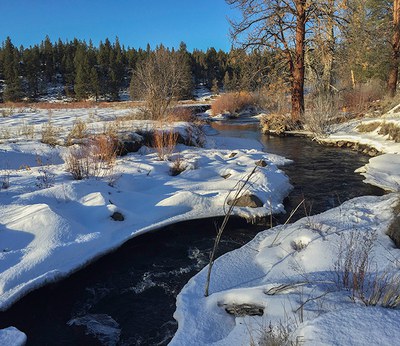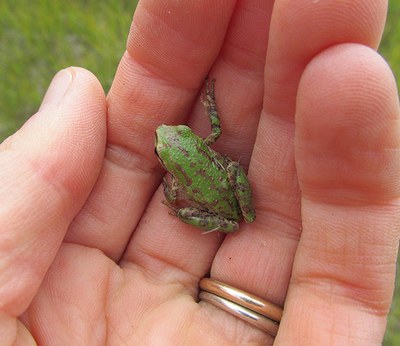
Winter is a harsh season for wild creatures. Temperatures drop, food becomes scarce, and shelter is more difficult to come by. Animals have a variety of ways they can cope--stockpiling food through the fall, burrowing through the snow to take advantage of more stable temperatures below the snowpack, and entering into a deep sleep that is only awakened by the promise of spring.
But what about more aquatic species like frogs? How do they survive the cruel temperatures of winter, when icy waters are unforgiving and freezing air numbs skin in mere seconds? Frogs and toads have a number of strategies for winter survival, but their tactics differ if they are aquatic or terrestrial species.

Many terrestrial (land-based) frogs live most of their life on land, even during the winter months. Some frogs are excellent diggers and will tunnel their way below the frost line to wait out winter’s chill. Frogs that are not as adept at digging, like the Pacific tree frog, instead seek out deep cracks and crevices in logs or rocks, or burrow as deep as they can in leaf litter. These frogs are more susceptible to freezing, but another defense mechanism can help keep them alive through the harshest conditions--antifreeze!
Frogs can actually freeze solid and ice crystals can form in their bodies, under their skin, and in their bladders. Frogs will stop breathing and their hearts will stop beating, making them appear to be dead. But quite the contrary! High concentrations of glucose (sugar) and sugar-alcohols course through their bodies and protect vital organs and individual cells from freezing. Their bodies begin to wake with the warmer temperatures of spring, returning their organs to normal function so they can begin feeding and breeding.
Aquatic species of frogs, like the Oregon spotted frog, take a different approach to winter survival. Contrary to popular belief, many aquatic frogs do not bury themselves in the mud during the winter months. Aquatic frogs require oxygen-rich water, so they can respire through their permeable skin. They often hibernate at the bottom of ponds, lying on top of the mud or partially burying themselves in it. If frogs completely submerged themselves in the mud, they would suffocate. The rising temperatures of spring warm the water slowly, waking these amphibians from their winter slumber.
Want to know more about amphibians, and the Oregon spotted frog? Join us at our February 22nd Nature Night with biologist Jay Bowerman! Registration is open and seats are still available!
Learn more:
- Subnivean zone: learn more about life under the snow!
- Oregon spotted frog: facts from U.S. Fish and Wildlife Service
- Ways the Land Trust is creating habitat for amphibians


